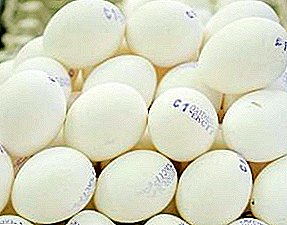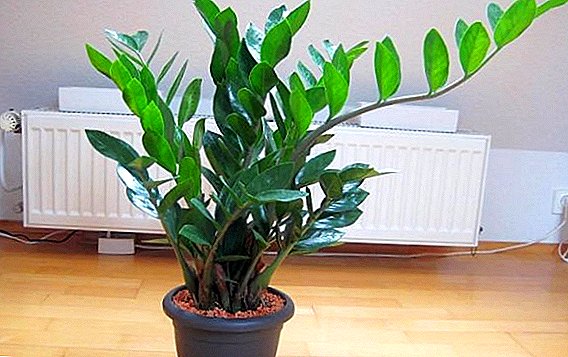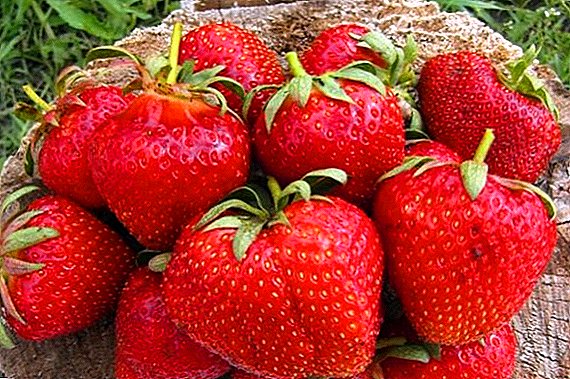
In early spring, when the day begins to gradually lengthen, poultry show the first signs of mating behavior.
They gradually increase, so the farmer needs to set up nests in the henhouse where the hens will lay eggs. But how to properly collect and store them?
Chicken eggs occupy a special place in human nutrition, therefore breeders constantly carry out selection work on selecting the best laying hens in order to get the maximum possible number of eggs.
Some amateur poultry breeders breed poultry on the territory of home farms, but in the case of amateur breeding it is not always possible to avoid seasonality in obtaining eggs, since birds practically do not rush during the cold season.
That is why there is a problem of their storage of eggs for a long period, which runs from late autumn to winter.
How to store chicken eggs?
The eggs laid by chickens are absolutely clean immediately after appearing in the nest, but microorganisms gradually enter them.
An egg that has just been laid has the same temperature as the chicken’s body, so it is quite warm. Gradually it cools and its internal content decreases in volume. At the blunt end of the egg, where much of the pores are located, air space arises.
Together with it, bacteria enter the egg, which are suitable conditions of existence in the egg. The process of bacteriological invasion takes place over the first few hours after laying an egg. Because of this, the nests need to maintain maximum cleanliness.
Eggs can be safely stored for up to 5 days. This shelf life of chicken eggs will not affect the nutritional value, as well as the hatchability of chickens.
Many experts believe that eggs are best eaten 3 days after laying, as the egg must undergo a ripening process.
It is believed that during this period the taste of the yolk becomes pleasant and begins to resemble a nut. If the eggs are stored longer, the hatchability of the chicks will begin to decline by 2 or 4%.
Collection
 Chicken eggs are usually collected twice a day.
Chicken eggs are usually collected twice a day.
The first time occurs in the morning, while feeding the birds, and the second - in the afternoon. This allows the livestock owner to reduce the risk of spitting eggs and excessive contamination of the shell.
It is best to collect eggs with clean hands.so that no microorganisms could settle in its contents ahead of time.
To reduce the risk of infection, the eggs are taken only with two fingers for a blunt and sharp end. In case the egg is taken with the whole hand, the thin shell protecting the egg from microorganisms will be erased, which will increase the chance of bacteria penetration.
Food
 It is much easier to keep eggs for eating than hatching eggs. It is enough to keep them in a clean container at a temperature of about 0 ° C. Before laying in the refrigerator, eggs are carefully wiped from dirt with a rag, as highly contaminated specimens will begin to deteriorate faster.
It is much easier to keep eggs for eating than hatching eggs. It is enough to keep them in a clean container at a temperature of about 0 ° C. Before laying in the refrigerator, eggs are carefully wiped from dirt with a rag, as highly contaminated specimens will begin to deteriorate faster.
When selecting eggs for eating you should carefully examine their shell. There should be no damage on it. Strongly polluted chicken eggs should never be washed under water, as the film protecting the egg from bacteria penetrates.
Incubation
 Eggs for incubation require special storage conditions, because during long-term preservation there is an irreversible process of aging, which can adversely affect the hatchability of chickens.
Eggs for incubation require special storage conditions, because during long-term preservation there is an irreversible process of aging, which can adversely affect the hatchability of chickens.
The amount of egg white and yolk is reduced due to the active evaporation of moisture through the egg shells.
The degree of evaporation of water depends largely on the average humidity and air temperature in the room, as well as on the individual quality of eggs.
The liquid evaporates quickly, which leads to the fact that the air sac in the egg increases its volume, and the egg mass becomes smaller. As for the concentration of salts, it increases, which reduces the chance of breeding chicken.
To retain moisture in the egg, they must be stored in a room where air temperature does not rise above 18 ° C. The relative humidity should be no more than 80%.
Microclimate creation
 In natural conditions it is difficult to create a really good microclimate for hatching eggs.
In natural conditions it is difficult to create a really good microclimate for hatching eggs.
For this we have to use artificial heating in winter and cooling in summer.
Electric lamps and heaters can be used as a heater, and a conventional refrigerator or a coil made of pipes is well suited for cooling. He must have a connection with the plumbing so that cold water can flow to the eggs.
So that the air humidity always remains at the optimum level. used conventional air conditioning. If there is no such system, then under the surface where the eggs lie, trays filled with water are placed.
In this case, the humidity of the air is easily controlled by a large area of the evaporating surface.
The room
It is best to store hatching eggs in a darkened room with a well-established ventilation system. They must lie strictly in an upright position, and their blunt end thus goes down.
If the eggs before laying in the incubator will lie more than 3 days, then they need to be turned over, otherwise the yolk will stick to the shell and the egg will become unusable.
Warming up
 Unfortunately, the contents of the egg are constantly subject to various irreversible changes.
Unfortunately, the contents of the egg are constantly subject to various irreversible changes.
If the poultry breeder still needs to increase the shelf life of eggs to 20 days, the conditions should be as follows: every day for two hours to warm them in an incubator at 38.5 ° C.
Immediately after heating, warm eggs are removed to a room with a lower temperature, where they are stored normally.
Daily heating of eggs can be replaced by a single heating, which should last about 5 hours. Carefully heated eggs retain their qualities from 15 to 20 days in a row. Unfortunately, the hatchability of young animals still decreases, so it is better not to delay the incubation process.
Ozonation
 Relatively recently, in countries of Europe and on some large poultry farms of Russia, ozone treatment processes have been applied to increase the shelf life of hatching eggs.
Relatively recently, in countries of Europe and on some large poultry farms of Russia, ozone treatment processes have been applied to increase the shelf life of hatching eggs.
To do this, in the room where the eggs lie, set a small ozone generator, for example OV-1. It exhibits an ozone concentration of 2-5 cubic meters. mg. This plant must constantly ozonize the eggs so that they do not lose their properties.
Private breeders use household equipment as an ozonizer, which can be purchased in any stores with appliances.
However, it must be remembered that during a person’s stay in the room where the ozonizer works, this installation must be turned off, as it is harmful to health.
Tara
As a container, where you can put hatching eggs for storage, suitable boxes, separated by thin boards or thick cardboard in the compartment, depending on the size of eggs.
In no case should the egg be moved in its compartment, as it may be damaged during transport and transport. In this box, the eggs are laid in an upright position with the blunt end down.
Transportation
 Chicken eggs are very sensitive to shaking, so they do not tolerate transportation.
Chicken eggs are very sensitive to shaking, so they do not tolerate transportation.
Because of this, the hatchability of chickens in transported eggs is always lower than in similar specimens that have not been transported. Also, hatchability depends on the quality of the packaging and the good faith of the seller who sold the eggs.
For the transportation of eggs they are laid out in a convenient container, and then put a place where the shaking will be minimal. Besides, you need to put the eggs so that they are as far as possible from the heat source.
To pack the eggs, gently take them with washed hands and wrap them in soft gauze. The space between each egg is densely filled with any soft filler.
After that, a cardboard lining with grooves is placed on the egg, where the next eggs are laid. A layer of soft filler is always placed between the layers of cardboard so that the eggs do not break during transport.
After filling the container, another layer of sawdust is placed on top, and then the box is closed with a lid and tightly tied with a rope.
 Broiler chickens: you can find growing, keeping, feeding and much more on our website.
Broiler chickens: you can find growing, keeping, feeding and much more on our website.But to learn about the correct processing of the carcass of chickens, you should read the article at: //selo.guru/ptitsa/kury/uboj/kak-obrabatyvat-i-hranit.html.
There are many ways to pack eggs for transportation, but in any case, it must be borne in mind that during prolonged storage they must have free access to air.
Otherwise, the eggs quickly deteriorate. To do this, the shipping container does not need to close tightly. Sometimes you need to make additional holes that improve the gas exchange of eggs.
If the eggs in the container will lie horizontally on the linings of cardboard, then in transit this box or box must be placed in such a way that the sharp ends of the eggs are looking down.
In addition, it is desirable to maintain a normal temperature, as sudden changes in temperature can destroy most of the embryos. For this reason, containers with hatching eggs should be stored at a temperature not exceeding 18 ° C.
Immediately after taking the eggs to the place, they have to stand for 24 hours in a darkened room so that their contents stabilize. Only after this eggs can be laid in the incubator.
The best way to transport eggs is to transport by water, since their contents at this moment are least subject to destructive shaking. Also allowed transportation by plane and by rail. As for road transport, it often spoils the contents of the eggs, so they need to be carefully packed to reduce the risk of death of embryos on the bumps.
Conclusion
Thus, the shelf life of eggs at home for incubation and food purposes should not exceed three weeks. In this case, proper storage conditions must be observed, otherwise the contents of the egg will become unusable, and the farm will not receive a well-deserved profit. It is best to use the eggs on the third day after wrecking.












